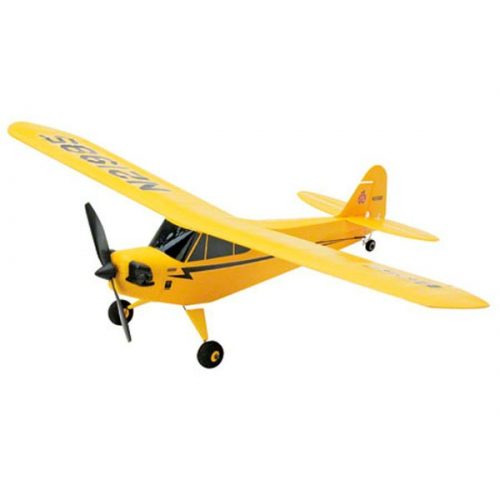Among aviation enthusiasts, radio-controlled planes have consistently occupied a unique and cherished position. These scaled-down aircraft have undergone a remarkable evolution since their inception, owing much of their progress to continuous technological advancements. In this article, we embark on a journey to delve into the most recent technological trends in the realm of Radio Controlled Planes, illuminating the innovations that have propelled these hobbyist devices to unprecedented altitudes.
Introduction to Radio-Controlled Planes
Before getting into the most recent technology advancements, it’s critical to first comprehend radio-controlled planes. These small-scale aircraft are normally controlled by remote control and have grown in favor among both young and senior hobbyists. They provide an exhilarating opportunity to experience the excitement of flight without having to leave the ground.
Evolution of Materials
The utilization of sophisticated materials is one key innovation in radio-controlled planes. Traditionally, these planes were made of balsa wood. However, modern models now incorporate materials like carbon fiber and foam composites. These materials offer greater durability and flexibility, allowing for more complex and aerodynamic designs.
Electric Power Systems
Electrical motors are currently more powerful and efficient than traditional internal combustion engines, enabling for longer flight periods and quieter operation. Radio-controlled planes have become more ecologically friendly as a result of this growth and development.
Advanced Electronics
The electronics are at the heart of any radio-controlled plane. Modern planes have cutting-edge gyroscopic stabilizers, GPS systems, and even advanced autopilot features. These technologies enhance stability and make flying these miniature aircraft more accessible for beginners.
High-Resolution Cameras
A significant trend in the radio-controlled plane community is the integration of high-resolution cameras. Drones, which are essentially radio-controlled aircraft, have paved the way for capturing stunning aerial footage. Enthusiasts can now attach GoPro-like cameras to their planes, opening up a world of aerial photography and videography.
The Role of AI and Automation
In the field of radio-controlled planes, artificial intelligence (AI) has made significant improvements. These AI-powered technologies can help pilots with everything from maintaining stable flight to performing accurate maneuvers. It’s like having a co-pilot in your pocket.
Auto-Takeoff and Landing
One remarkable feature is the ability of radio-controlled planes to execute auto-takeoff and landing sequences. AI algorithms assess the conditions and guide the plane to safely launch and return to the ground, making it easier for beginners to enjoy flying without extensive training.
Collision Avoidance Systems
Many radio-controlled planes now have sophisticated AI-driven collision avoidance systems. These systems use sensors and cameras to detect barriers in the plane’s route and modify the plane’s course automatically to avoid crashes, resulting in a safer flying experience.
Connectivity and Remote Control
With the advent of smartphone apps and advanced remote control technology, flying a radio-controlled plane has never been more accessible or enjoyable.
Smartphone Integration
Many radio-controlled plane models now offer smartphone integration, allowing pilots to control their planes with ease through a mobile app. This feature enhances the overall flying experience by providing real-time data and telemetry information.
Long-Distance Control
Radio-controlled planes can now be operated from considerably wider ranges because of advances in radio frequency technology. Pilots may enjoy flying their planes without fear of signal loss, allowing them to explore the skies.
Conclusion
The world of radio-controlled planes has witnessed a remarkable transformation in recent years. From advanced materials to AI integration and smartphone control, these miniature aircraft have become more accessible and exciting than ever before. Whether you’re a seasoned enthusiast or a newcomer to the hobby, the latest tech trends in radio-controlled planes offer a thrilling experience that combines technology and aviation.





























